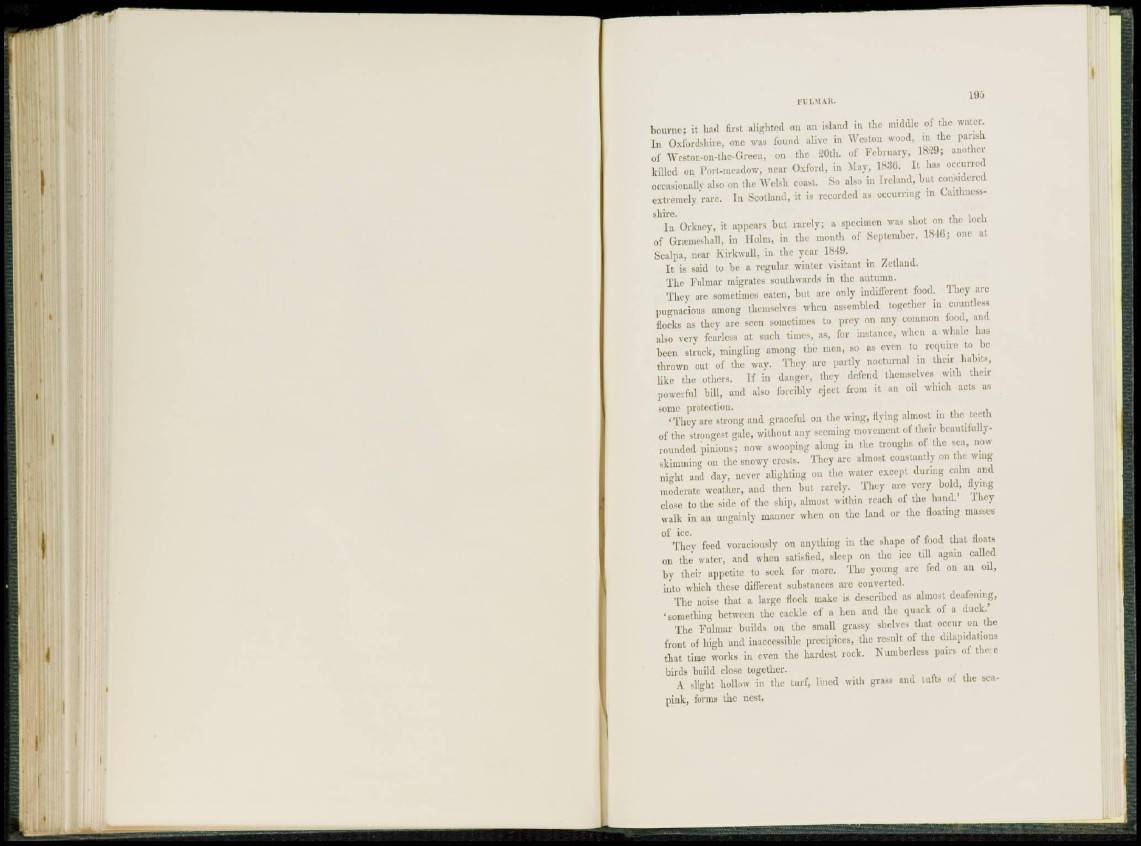
FULMAR. 190
bourne; it had first alighted on an island in the middle of the water.
I n Oxfordshire, one was found alive in Weston wood, in the parish
of Weston-on-the-Grecn, on the 20th. of February, 1829; another
killed on Port-meadow, near Oxford, in May, 1830. It has occurred
occasionally also on the Welsh coast. So also in Ireland, but considered
extremely rare. In Scotland, it is recorded as occurring in Caithnessshire.
In Orkney, it appears but rarely; a specimen was shot on the loch
of GnemeahaH, in Holm, in the month of September, 1840; one at
Scalpa, near Kirkwall, in the year 1849.
I t is said to be a. regular winter visitant in Zetland.
The Fulmar migrates southwards in the autumn.
They are sometimes eaten, but are only indifferent food. They are
pugnacious among themselves when assembled together in countless
flocks as they are seen sometimes to prey on any common food, and
also very fearless at such times, as, for instance, when a whale has
been struck, mingling among the men, so as even to require to be
thrown out of the way. They arc partly nocturnal in their habits,
like the others. If in danger, they defend themselves with their
powerful bill, and also forcibly eject from it an oil which acts as
some protection.
' T h e y are strong and graceful on the wing, flying almost in the teeth
of the strongest gale, without any seeming movement of their beautifullyrounded
pinions; now swooping along in the troughs of the sea, now
skimming on the snowy crests. They are almost constantly on the wing
night and day, never alighting on the water except during calm and
moderate weather, and then but rarely. They are very bold, flying
close to the side of the ship, almost within reach of the hand.' They
walk in an ungainly manner when on the land or the floating masses
of ice.
They feed voraciously on anything in the shape of food that floats
on the water, and when satisfied, sleep on the ice till again called
by their appetite to seek for more. The young are fed on an oil,
into which these different substances are converted.
The noise that a large flock make is described as almost deafening,
'something between the cackle of a hen and the quack of a duck.'
The Fulmar builds on the small grassy shelves that occur on the
front of high and inaccessible precipices, the result of the dilapidations
that time works in even the hardest rock. Numberless pairs of the: e
birds build close together.
A slight hollow in the turf, lined with grass and tufts of the seapink,
forms the nest.